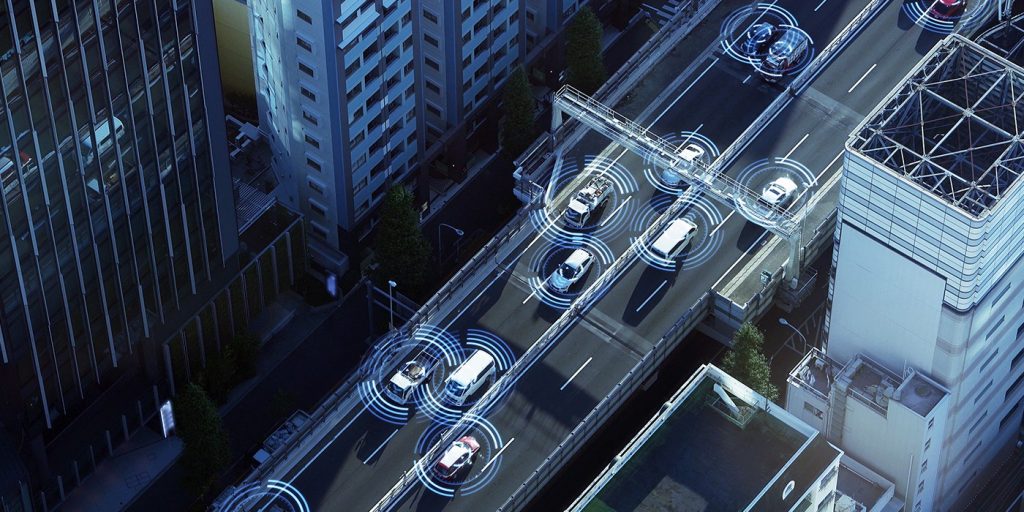In June 2020, Amazon announced its $1.3B acquisition of Zoox. While the purchase price represents a significant absolute dollar value, it is also 60% below the company’s last post-money financing valuation and reflects the challenges of developing autonomous vehicles (AVs). Based on engagement with the AV ecosystem, Avanta Ventures sees two significant themes impacting the industry, specifically: increased consolidation with limited new full-stack autonomy companies being created, and an increased number of non-traditional industry players providing capital and exit paths for AV startups.
The dichotomy of four years
After months of speculation, Amazon formally announced in June 2020 its acquisition of Zoox, one of the last large independent autonomous vehicle developers. In many ways, this acquisition mirrors General Motors’ purchase of Cruise Automation back in mid-2016, which kicked off the autonomous vehicle race. Both Cruise and Zoox had the grandiose vision of building a full Level 5 self-driving platform. Both sought to build the entire hardware and software stack. Even the acquisition prices were similar, with Cruise at approximately $1B and Zoox at an estimated $1.3B. For all their similarities, however, the two transactions could not be more different.
When GM acquired Cruise, the general sentiment was that Level 4 and 5 AVs would be available imminently. OEMs, startups and investors alike made lofty predictions that AVs would be fully deployed within 5 years, and the privately-owned automobile would be no more. As a result, Cruise, which had just raised a Series A less than six months before the acquisition, was purchased for over 10x its Series A post-money valuation of $85M. Four years later, Amazon’s acquisition of Zoox reveals the challenge of achieving true autonomy. Burning over $30M per month and facing significantly declining investor appetite, Zoox’s sale price represented a 60% decrease from its last post-money value. Furthermore, Amazon also forced key onerous contractual terms which would make the acquisition contingent on nearly 90% of key employees remaining with the company post-acquisition, showing the power Amazon had as a bidder in this transaction over Zoox.
At its core, the Zoox transaction is indicative of the challenging realities that the broader autonomous vehicle industry is facing. While Zoox may represent the culmination of these challenges, similar consolidations and transactions have been occurring regularly over the past few years. The team at Drive AI was acquired by Apple in June 2019, the assets of Scotty Labs were acquired by DoorDash in August 2019 and more recently, Starsky Robotics shut down in March 2020.
Looking beyond “Amazoox”
Looking forward, we have synthesized several key industry themes based on conversations with AV startups, ongoing monitoring of the maturing underlying technologies, and engagements with the broader stakeholder ecosystem of AV developers, VCs, OEMs, and regulatory agencies:
Increased industry consolidation and limited number of new full-stack autonomy companies being formed
The last few years have served as a reminder of the technical complexities of developing autonomous systems, with early entrants into the space unpleasantly surprised by both the time and capital required. Concurrent with this rise in technical uncertainty has been a correlated decline in venture investment appetite in new full-stack AV companies. Where early stage autonomy businesses were previously being funded based solely on founding team backgrounds, investors are now demanding additional proof points, benchmark metrics, or significantly differentiated approaches. This has resulted in very few new Level 4 or 5 autonomy companies being started in the past year, an increased number of acquihires, and self-driving talent sharply concentrating around industry leaders like Waymo or Cruise.
We foresee this trend continuing going forward. Early stage AV company formation and investment activity will likely concentrate around specific use cases (e.g., mining, construction, manufacturing, etc.) By constraining the operating domain of autonomy, developers can not only better manage edge cases that could arise, but also more cost-effectively deploy external safety solutions to address interim technical gaps (e.g., small cell stations to guarantee connectivity for teleoperations). In a similar fashion, we believe startups will also form to tackle specific functions within the AV technology stack. Helm.ai and Recogni are examples of more recent companies focused specifically around camera-based AV computer vision.
Increased financing and M&A activity by non-traditional players
As a result of the reduction of venture dollars invested in the AV space, startups are increasingly turning to alternative sources of financing, particularly from end customers who have the networks and platforms to leverage AVs at scale. In addition to Amazon, other large logistics players, such as UPS (TuSimple) and FedEx (Peloton) have begun to devote resources to this space. Walmart has partnered with multiple delivery-specific AV companies (Nuro, Gatik, Udelv). Still others such as DoorDash have made acquisitions of low-speed, sidewalk robotics businesses. Each of these companies ultimately represents examples of industry segments which are likely to operationalize AVs. As startups look for commercial pilots and opportunities to create sustainable business models, they have increasingly looked toward such companies. We believe this theme will continue, with these AV end customers also becoming more open to making investments in AV startups and acquiring companies to in-source AV technical development and expertise.
What can we expect down the road?
Ultimately, while the reality of AVs has not kept pace with its hype, there are significant amounts of technological advancement that have and continue to progress in the background. So although it may be tempting to simply dismiss AVs as a pipe dream, this could not be further from the truth. In fact, we see AVs representing a sea of change for vast swaths of the economy, including insurance, with its impacts felt “gradually and then suddenly”.




